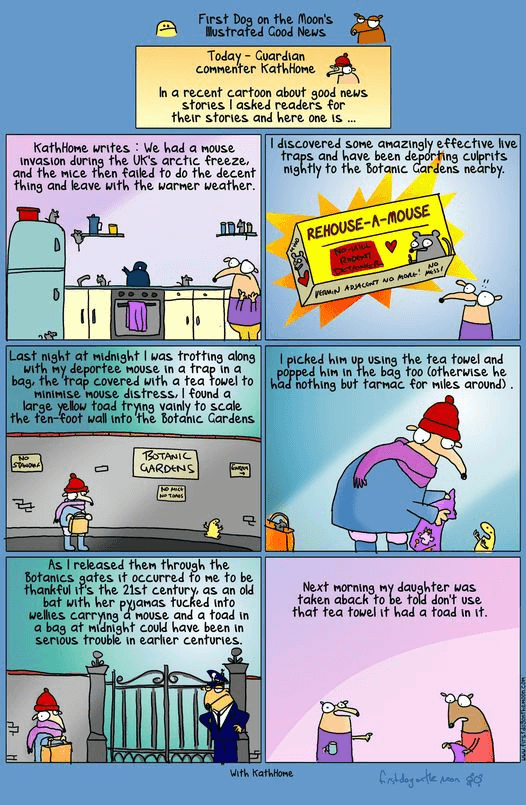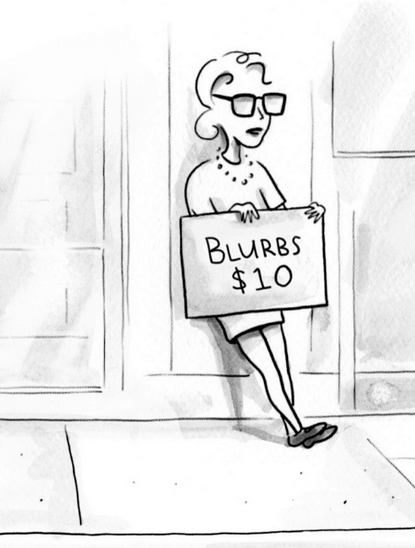CSotD: A marginally qualified lecture on copyright
Skip to commentsToday’s Non Sequitur (AMS) starts off a posting which also begins with my admission that I am not a lawyer and this is not legal advice. Close cover before striking. Void where prohibited.
Still, before I started critiquing cartoons regularly in 2010, “fair use” and “copyright” were the first things I looked into, including querying the syndicates for their input on the topic.
And I’m still here. At the last AAEC Convention, a cartoonist groused a little about my having chided him over a cartoon. I started to explain the mission, but he interrupted me: “No, no, when I’m off the mark, I want you to kick my ass,” he said.
A few months later, he won a major award, though it was likely based on the number of times I didn’t have to kick his ass.
Use of copyrighted images in criticism and commentary is fair use, though I give credit and links, and try to avoid using more of a book, for instance, than is necessary to make my point.
The morning began with a Clay Jones tweet that alerted me to a SCOTUS decision on the topic, and here’s a paywall-free copy of that Washington Post article.
And here’s another, briefer look at the matter from Bado’s blog.
And if you really want to take a deep dive, here are the SCOTUSblog files and knock yourself out.
And here’s the decision itself, which I will read later today but can’t wade through in time at the moment.
I’m not surprised Clay took this one on: He has a very loose, creative style and is militant on the topic of tracing and use of lightboxes by other cartoonists. He’s not the only cartoonist who complains about the practice, but he seems the loudest.
And, in this case, I’m going to give his ass a bit of a kick, in friendship and with the understanding that neither of us are attorneys. But, while the topic is of extreme interest to cartoonists in general and political cartoonists specifically, I’m pretty sure, as Russians politely phrase it, that he’s not exactly correct.
The woman who took the original photo of Prince that Warhol used as “a photographic reference” was paid a royalty for that one time use. But Conde Nast paid Warhol’s estate $10k to create a new, orange version of Warhol’s image for the cover of a tribute issue after Prince’s death.
A major issue is that they were using the image commercially, to sell copies of the magazine — which put them in competition with the photographer — rather than creatively, to offer a critique of Warhol’s art.
Another is that they paid royalties to the wrong person: The photographer had only licensed it for one time use and still retained the copyright to the original image.
Kagan and Roberts dissented in the 7-2 ruling, with Kagan suggesting that Warhol’s use was transformative enough to qualify as fair use, but I doubt their ruling in this case has established just what level of change has to happen.
If I were a cartoonist, I’d wish that, instead of this case, the Obama “Hope” poster matter had gone up the ladder to SCOTUS instead of being settled out of court, since it was not as clear a case of competing commercial intent, contractual violation and post-mortem artistry.
In fact, it wasn’t clear on either side and might have brought about a deeper conversation both in the arguments and in whatever decision emerged.
Or they might have listened to both sides and sent the case to the People’s Court, where, as Opus points out, confused, argumentative contradiction can be more properly adjudicated.
In any case, and repeating once more that IANAL, I can’t see that the Warhol case has any impact on political cartooning, which punches several buttons in the fair use definition: It’s transformative, it’s critical, it’s educational.
Though if I were one of those websites that simply re-publishes a bunch of cartoons without commentary, permission or compensation, I might be a little nervous.
Meanwhile, down in the Antipodes
First Dog on the Moon has had enough bad news and has been looking for more upbeat, if not necessarily uplifting, stories. This one actually comes from the Northern Hemisphere, but I’m crediting it as Australian because First Dog is down there and I like saying “Antipodes.”
I hate podes.
Fiona Katauskas is also from the Antipodes, but, as you can see, she has a little trouble putting a positive spin on things. Still, it’s encouraging to know that moving all the way down there wouldn’t set you free of the problems we’ve got up here in the Propodes.
Difference being that Australia’s lightly populated enough that they seem to take the failures of their government a lot more personally than we do, which is probably to their benefit.
Meanwhile, in Pros & Cons (KFS), Lyndon tries to offer an optimistic branch to his patient, only to learn once again that some people simply project doom in whatever direction they’re pointed.
Which makes me think of Dunbar in Catch-22, who, having accepted that he’s going to be killed on some godforsaken bombing mission, cultivates boredom while off duty, in order to make his short life seem that much longer.
Which in turn is a reminder that, when I was a young man, I thought Catch-22 was about war. Then I got to sample the corporate world. And then I simply grew older and learned more about life.
It’s one of those books that you need to read again every few years to see how it’s changed since the last time.
Juxtaposition of the Folly of Youth
The connection here may not be obvious to you, but it is to me. I don’t think I ever got drunk sophomore year. Indiana had a 21 drinking age and it was much easier to score weed than booze, and weed was a whole lot cheaper, at least until Nixon started Operation Intercept and shifted the trade from small fry grass dealers over to the Mafia, who offered more products and higher prices.
One of the few times anarchy was a much better idea, though that’s not what made me include the Pearls strip. Rather, it made me think of a graffito in which someone spray-painted the anarchy symbol on a brick wall and added “Rules!” under it.
Anarchy Rules.
Reluctantly, one assumes.
Anyway, here’s a song for Andy Warhol, an earworm for you and a reminder of when we all dressed like this but I couldn’t yet grow the mutton chops.











Comments 26
Comments are closed.